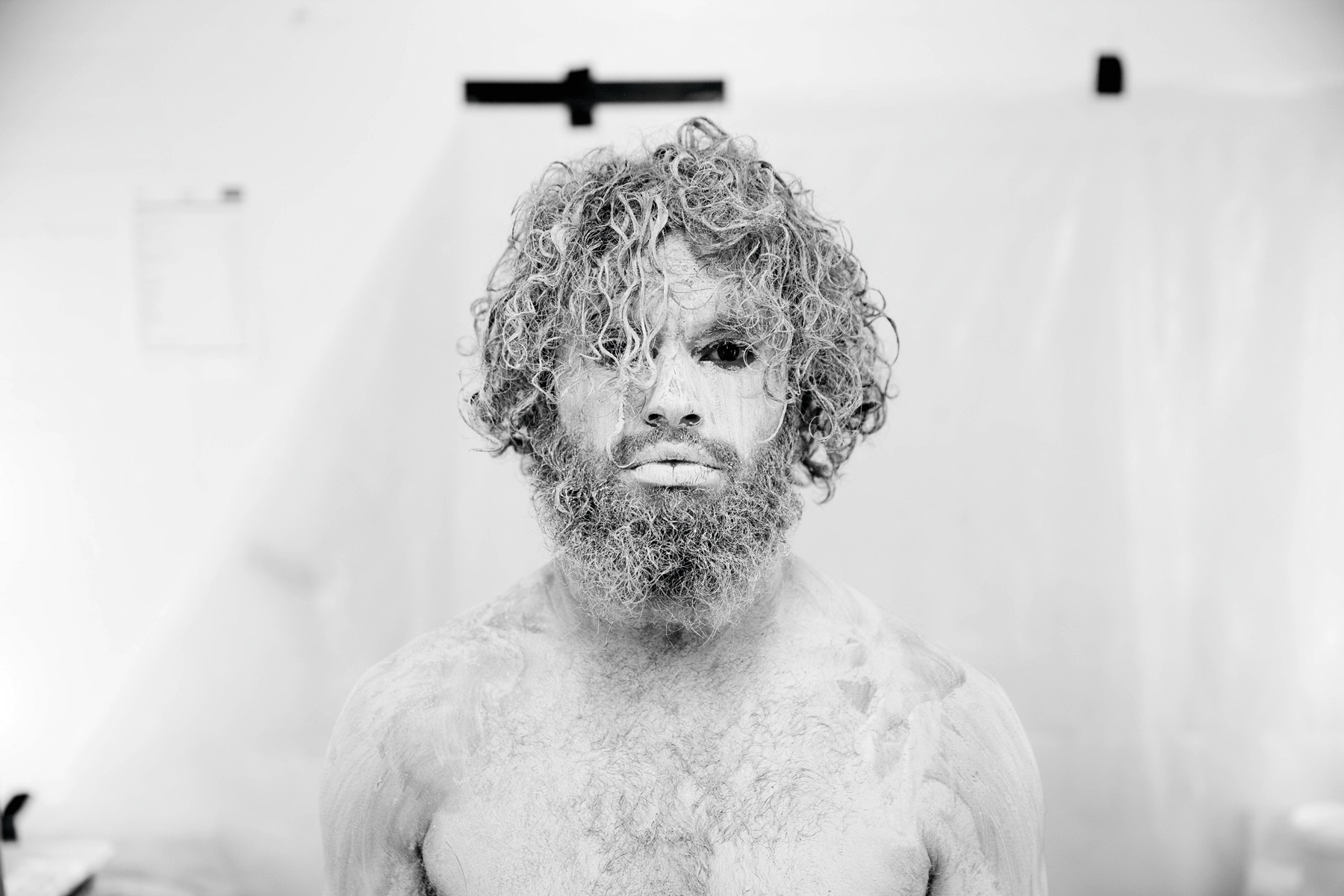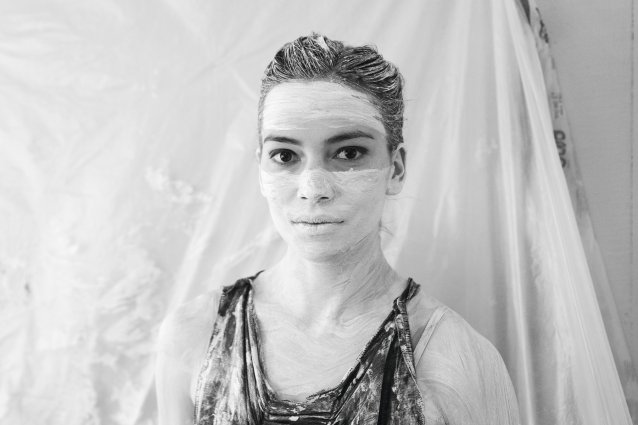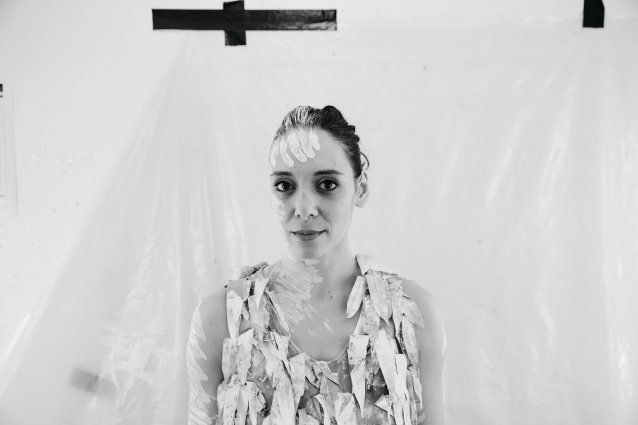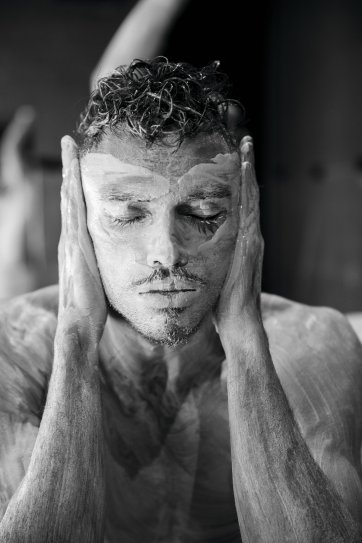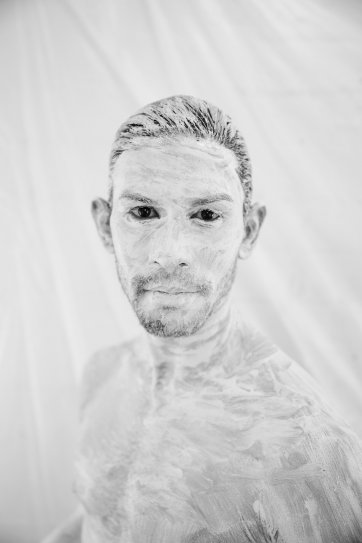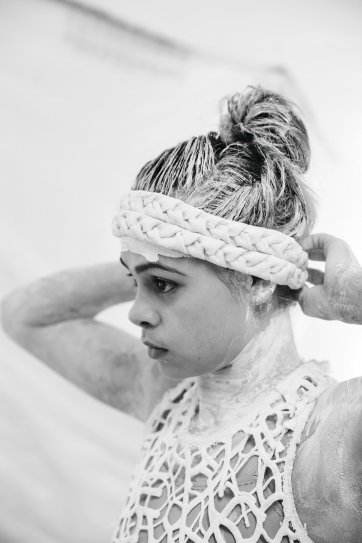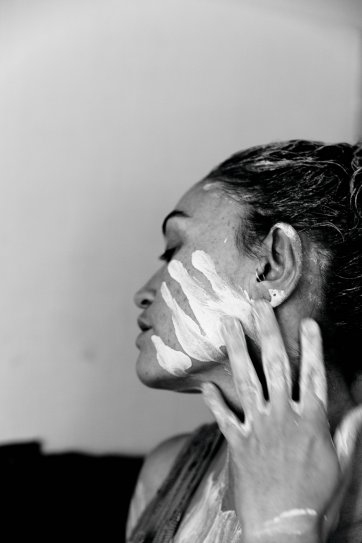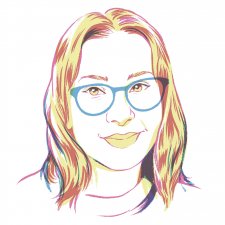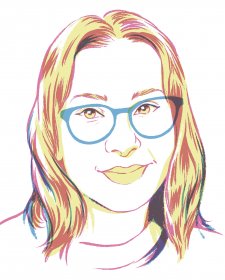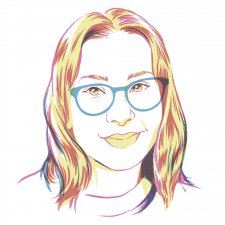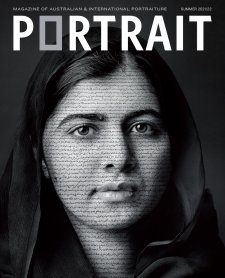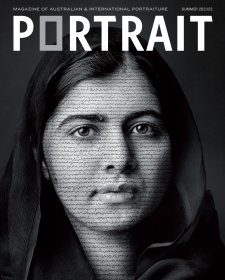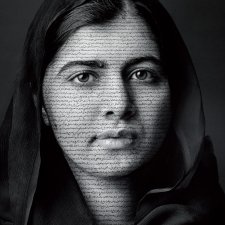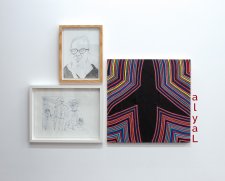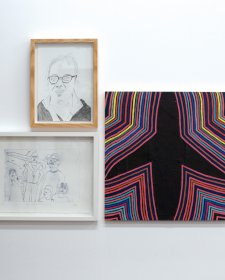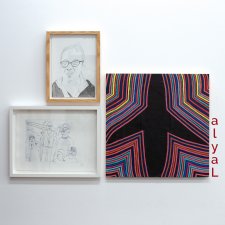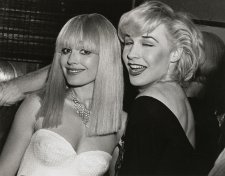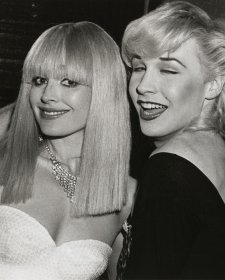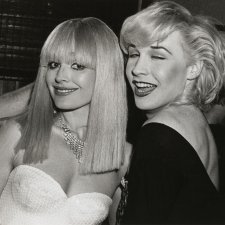‘I love spending time in there because the energy’s never the same,’ he says. ‘I get to know people and how they respond to the camera and how they grow to respond. It’s an amazing place – just a room covered in plastic so the ochre doesn’t go everywhere, which it does anyway!’
Ochre itself is a beautiful tactile imprint of all that is sacred and has been used by Indigenous people since time immemorial to incorporate the earth into ceremony, dance and art. A natural pigment that is extracted from the earth, ochre is crushed and combined with various different fluids to create a paint-like mixture. While ochre is the generic term, each region has their own language name for the material. Featured within the photographs, the dancers here wear gapan, a white-coloured ochre sourced from North East Arnhem Land by the community.
‘It’s always about the magic of the culture and Country,’ Nash says. ‘Gapan can’t be replicated. It’s just so beautiful in how it dries and how it flakes off into the dust.’
Through photographic portraiture, a visual form reliant on capturing the essence, personality and identity of the sitter, Nash captures the true strength of each dancer’s cultural identity and expression. Here, through these images, we are invited into a place of deep spirituality and personal transformation as Nash records the powerful ephemeral moments of performance, ceremony and culture. He presents the artists in ritual, in a space that allows them to deliver the energy of Ancestors and Country, where people’s bodies are transformed into extreme brilliance.
‘Song, dance, and visual art, all fit together within one story. My relationship to design and also to these portraits and this room – the whole thing informs me,’ he reflects. ‘These guys are the storytellers and I’m in this room seeing them become those characters, moments, spirits.’
For Nash, documenting the dancers is not only a means for him to connect to the work but as a photographer, a designer, an artist, and as an Aboriginal man, it is a way to reshape the narrative that has been missing for 250 years.
